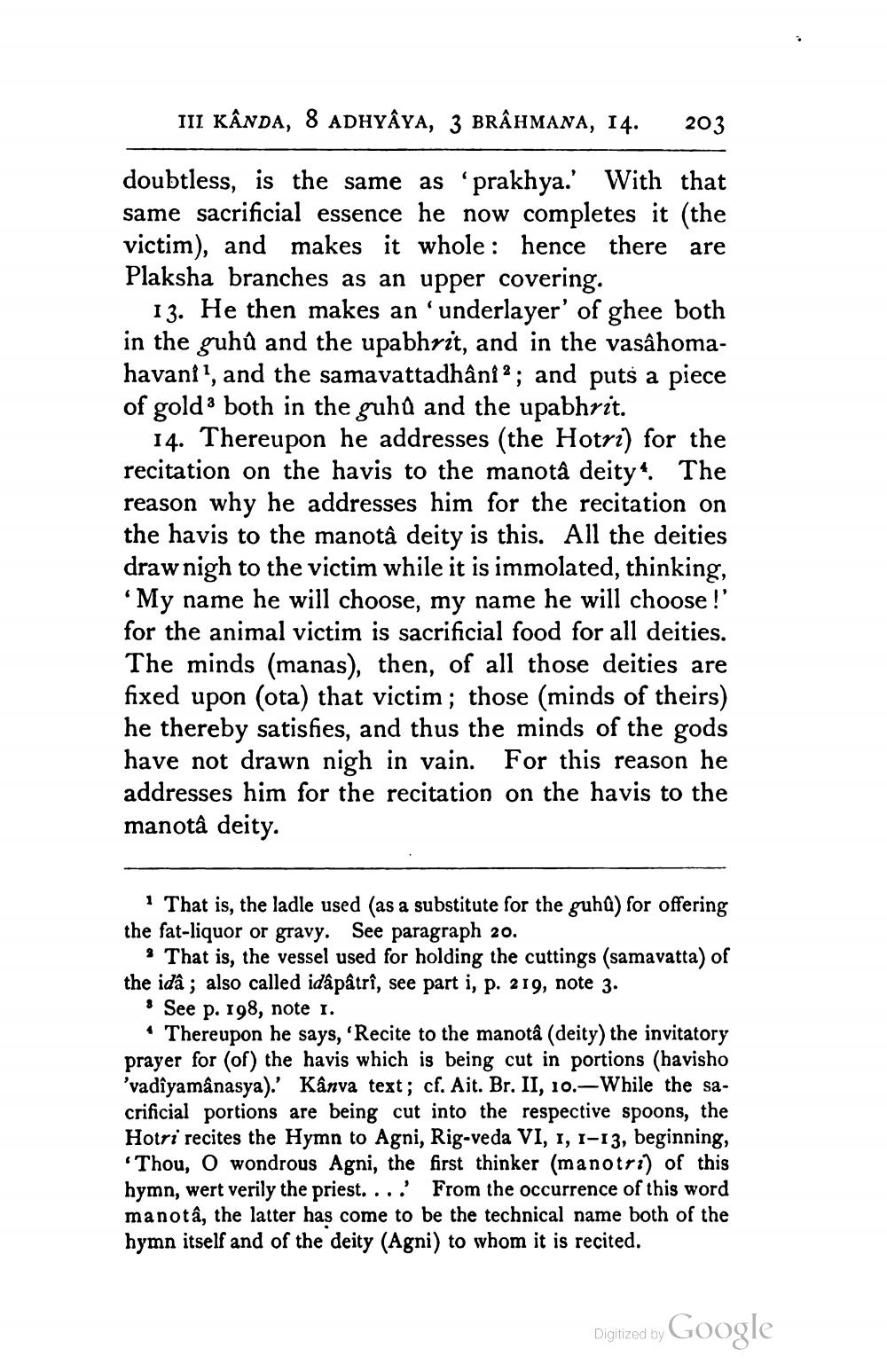________________
III KÂNDA, 8 ADHYÂYA, 3 BRÂHMANA, 14.
203
doubtless, is the same as 'prakhya. With that same sacrificial essence he now completes it (the victim), and makes it whole: hence there are Plaksha branches as an upper covering.
13. He then makes an 'underlayer' of ghee both in the guhů and the upabhrit, and in the vasâhomahavani!, and the samavattadhânia; and puts a piece of gold both in the guhů and the upabhrit.
14. Thereupon he addresses (the Hotri) for the recitation on the havis to the manotà deity". The reason why he addresses him for the recitation on the havis to the manotâ deity is this. All the deities draw nigh to the victim while it is immolated, thinking,
My name he will choose, my name he will choose!' for the animal victim is sacrificial food for all deities. The minds (manas), then, of all those deities are fixed upon (ota) that victim; those (minds of theirs) he thereby satisfies, and thus the minds of the gods have not drawn nigh in vain. For this reason he addresses him for the recitation on the havis to the manotâ deity.
That is, the ladle used (as a substitute for the guhd) for offering the fat-liquor or gravy. See paragraph 20.
? That is, the vessel used for holding the cuttings (samavatta) of the idâ ; also called idâpâtrî, see part i, p. 219, note 3.
* See p. 198, note 1.
• Thereupon he says, 'Recite to the manotâ (deity) the invitatory prayer for (of) the havis which is being cut in portions (havisho 'vadiyamânasya). Kanva text; cf. Ait. Br. II, 10.-While the sacrificial portions are being cut into the respective spoons, the Hotri recites the Hymn to Agni, Rig-veda VI, 1, 1-13, beginning, 'Thou, O wondrous Agni, the first thinker (manotri) of this hymn, wert verily the priest.... From the occurrence of this word manotâ, the latter has come to be the technical name both of the hymn itself and of the deity (Agni) to whom it is recited.
Digitized by Google




